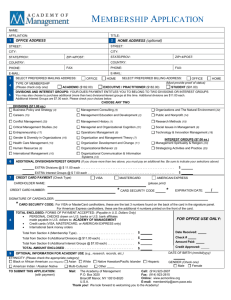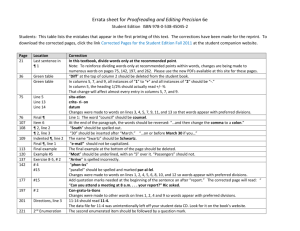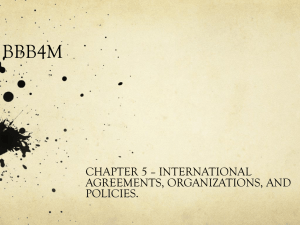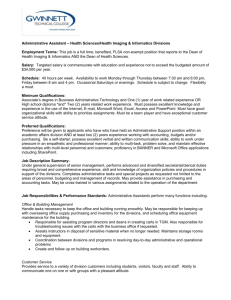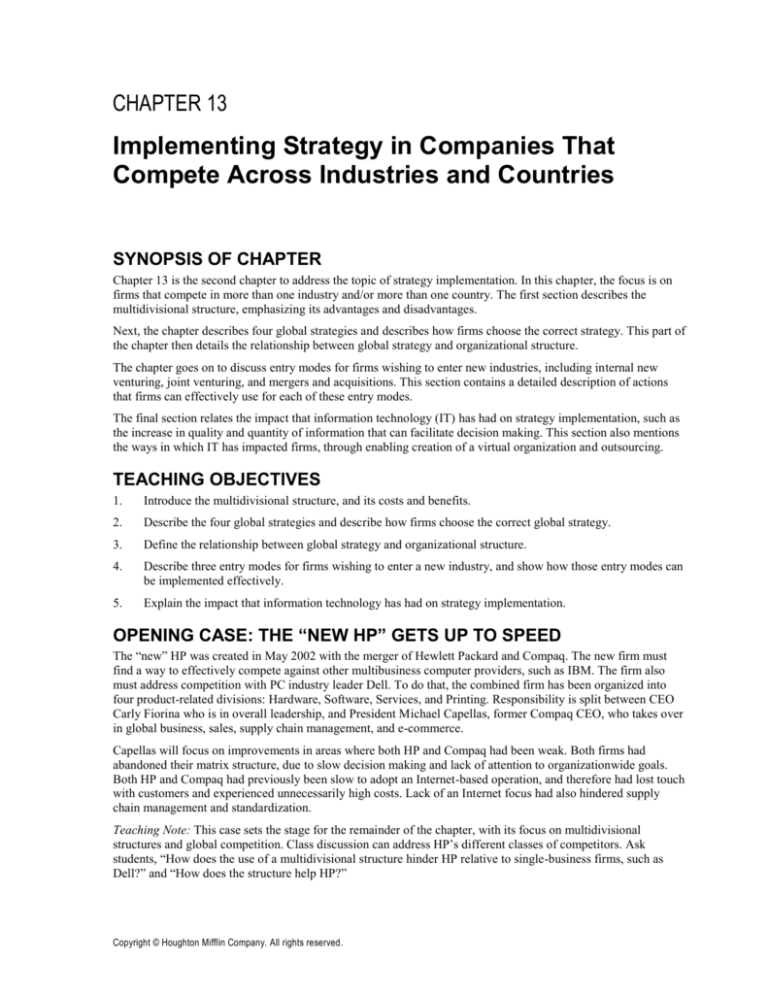
CHAPTER 13
Implementing Strategy in Companies That
Compete Across Industries and Countries
SYNOPSIS OF CHAPTER
Chapter 13 is the second chapter to address the topic of strategy implementation. In this chapter, the focus is on
firms that compete in more than one industry and/or more than one country. The first section describes the
multidivisional structure, emphasizing its advantages and disadvantages.
Next, the chapter describes four global strategies and describes how firms choose the correct strategy. This part of
the chapter then details the relationship between global strategy and organizational structure.
The chapter goes on to discuss entry modes for firms wishing to enter new industries, including internal new
venturing, joint venturing, and mergers and acquisitions. This section contains a detailed description of actions
that firms can effectively use for each of these entry modes.
The final section relates the impact that information technology (IT) has had on strategy implementation, such as
the increase in quality and quantity of information that can facilitate decision making. This section also mentions
the ways in which IT has impacted firms, through enabling creation of a virtual organization and outsourcing.
TEACHING OBJECTIVES
1.
Introduce the multidivisional structure, and its costs and benefits.
2.
Describe the four global strategies and describe how firms choose the correct global strategy.
3.
Define the relationship between global strategy and organizational structure.
4.
Describe three entry modes for firms wishing to enter a new industry, and show how those entry modes can
be implemented effectively.
5.
Explain the impact that information technology has had on strategy implementation.
OPENING CASE: THE “NEW HP” GETS UP TO SPEED
The “new” HP was created in May 2002 with the merger of Hewlett Packard and Compaq. The new firm must
find a way to effectively compete against other multibusiness computer providers, such as IBM. The firm also
must address competition with PC industry leader Dell. To do that, the combined firm has been organized into
four product-related divisions: Hardware, Software, Services, and Printing. Responsibility is split between CEO
Carly Fiorina who is in overall leadership, and President Michael Capellas, former Compaq CEO, who takes over
in global business, sales, supply chain management, and e-commerce.
Capellas will focus on improvements in areas where both HP and Compaq had been weak. Both firms had
abandoned their matrix structure, due to slow decision making and lack of attention to organizationwide goals.
Both HP and Compaq had previously been slow to adopt an Internet-based operation, and therefore had lost touch
with customers and experienced unnecessarily high costs. Lack of an Internet focus had also hindered supply
chain management and standardization.
Teaching Note: This case sets the stage for the remainder of the chapter, with its focus on multidivisional
structures and global competition. Class discussion can address HP’s different classes of competitors. Ask
students, “How does the use of a multidivisional structure hinder HP relative to single-business firms, such as
Dell?” and “How does the structure help HP?”
Copyright © Houghton Mifflin Company. All rights reserved.
158
Chapter 13: Implementing Strategy in Companies That Compete Across Industries and Countries
LECTURE OUTLINE
I.
II.
Overview
A. This chapter addresses issues of implementing strategy in multibusiness organizations, which in some
cases, are extensions of concepts explored in Chapter 12 (implementation in single business firms).
B.
In other cases, the increased complexity of simultaneously managing more than one business creates
new concerns and issues.
Managing Corporate Strategy Through the Multidivisional Structure
A. Bureaucratic costs are likely to be higher in multibusiness firms than in single business ones.
B.
For multibusiness firms, the multidivisional structure is superior to the functional structure, for
several reasons.
Show Transparency 82
Figure 13.1: Multidivisional Structure
1.
2.
3.
4.
Each business unit is placed in a self-contained division and supplied with all support functions.
Thus each part essentially operates separately from the other parts of the company.
The office of corporate headquarters staff is created to control and oversee the divisions.
Headquarters also provides corporate support functions, such as finance and R&D.
Divisional managers have operating responsibility; corporate managers have strategic
responsibility.
Each division is treated as a profit center and can adopt the structure and control systems that
best serve its strategy.
STRATEGY IN ACTION 13.1: GM’S MULTIDIVISIONAL STRUCTURE CHANGES
OVER TIME
Over the years, GM has changed its structure several times, beginning with the 25 autonomous operating divisions
that comprised the firm in the 1910s. To better compete with centralized, single-business Ford Motors, CEO
Alfred Sloan invented the multidivisional structure in 1920. This structure allowed GM to benefit from the cost
savings that come from centralization, while keeping the flexibility and innovation inherent in a decentralized
structure. Sloan saw advantages from the multidivisional structure, including improved accountability, easier
resource allocation, and higher autonomy and morale. In the 1980s, to better compete with the cost-efficient
Japanese automakers, GM again re-structured, reducing the number of divisions and centralizing design and
engineering. All GM vehicles began to look alike, sales dropped, and the structure was abandoned. Today, the
firm continues to struggle with issues of centralization, experimenting to find the right level.
Teaching Note: This case does a good job at describing the challenges of a multidivisional structure. GM seems to
be too decentralized at first, then to centralize too much, then to overcorrect by too much decentralization, and so
on. The firm is apparently unable to find the right amount of centralization to gain cost advantages without
sacrificing flexibility. Students should recognize, based on this case, that organization structure is not static, and
that firms are constantly assessing the tradeoffs inherent in each structural change.
C.
D.
A multidivisional structure has several advantages.
1.
Enhanced corporate financial control is one advantage of the multidivisional structure. The
profitability of the different divisions is very clear, allowing the corporate staff to readily
determine the best resource allocation scheme.
2.
Enhanced strategic control is another benefit, because corporate staffs are freed from operating
responsibilities, and can concentrate on corporate strategy.
3.
The structure overcomes limits to growth because it permits the company to operate many
businesses without information overload or requiring too much intervention from corporate
managers.
4.
Because divisional performance has greater visibility, divisional managers realize that corporate
managers can detect inefficiencies, and thus are motivated to perform at a higher level.
Implementing a multidivisional structure has drawbacks as well, and the advantages must be balanced
against them.
1.
Managing the balance of power between corporate and divisional managers is difficult. The
problem lies in deciding how much authority to centralize at the corporate level and how much
Copyright © Houghton Mifflin Company. All rights reserved.
Chapter 13: Implementing Strategies in Companies That Compete Across Industries and Countries
159
to decentralize at the divisional level. Too much centralizing puts divisional managers in a
straitjacket. Too much decentralizing, however, may cause the company to lose control over its
strategy, damaging corporate performance.
STRATEGY IN ACTION 13.2: AMOCO, ARCO, AND BURMAH CASTROL
BECOME PART OF BP
For years, Amoco was organized into three operating subsidiaries: exploration, refining, and chemicals
manufacturing. Combined with a centralized structure, this led to a tall hierarchy and slow decision making.
Intense price competition in the 1990s spurred the firm to look for cost savings, and the firm switched to a
decentralized, multidivisional structure. The structure worked, and when the firm merged with BP and then
acquired ARCO and Burmah Castrol, it allowed for a smooth integration of the new businesses.
Teaching Note: In contrast to the Strategy in Action 13.1 about GM, this case illustrates how Amoco was able to
find a level of centralization that enabled cost savings while also enabling flexibility. Amoco’s success in
integrating two acquisitions and a merger partner shows that the structure is working effectively. Ask students to
compare Amoco’s structure with GM’s and to identify reasons why one firm has succeeded while the other has
not.
2.
E.
If the corporate center puts too much financial pressure on the divisions, they may be
encouraged to distort the information they supply to corporate managers. For example, they
may pursue short-run rather than long-run profit maximization.
3.
Divisions may start to compete for resources, which reduces cooperation and learning across
units.
4.
When divisions are competing, it is difficult to set fair prices for trading resources between
them. Each division tries to set the highest price it can to maximize its own ROIC, but such
efforts can hurt corporate performance and corporate ROIC. This is referred to as the transfer
pricing problem.
5.
If divisions are being evaluated strictly on return on investment targets, they might cut back on
R&D to improve their financial performance.
6.
Each division has its own support services, which can lead to a duplication of functions and
increased expenses. This is an especially critical problem in regard to highly expensive R&D.
After a company chooses a multidivisional structure, it then must develop the control mechanisms
that are appropriate for that structure. The type of control mechanisms that are used depends on
whether the firm is using unrelated diversification, vertical integration, or related diversification.
Show Transparency 83
Table 13.1: Corporate Strategy, Structure, and Control
1.
Because there are no linkages between divisions, unrelated diversification is the easiest and
cheapest strategy to manage, with the lowest level of bureaucratic costs.
a.
Normally, a multidivisional structure is used for this strategy and the corporate
headquarters tends to be small because the need for integration among divisions is low.
b.
The control used is principally financial control and corporate headquarters uses
measures such as ROIC as the main means of evaluating each division’s performance.
They treat the corporation’s businesses as an investment portfolio, attempting to allocate
resources so as to realize the greatest profitability.
c.
Divisions are completely autonomous, thus the idea of corporate culture is meaningless.
STRATEGY IN ACTION 13.3: ALCO STANDARD GETS IT RIGHT
Alco pursues a strategy of unrelated diversification in two main industries: office products and paper distribution.
Corporate managers make no attempt to intervene in the operations of each division. They see their role primarily
as information gatherers and providers of the resources that the divisions need to improve their performance.
Divisional managers are rewarded with stock options based on the performance of their divisions, and corporate
performance has been improving steadily.
Copyright © Houghton Mifflin Company. All rights reserved.
160
Chapter 13: Implementing Strategy in Companies That Compete Across Industries and Countries
Teaching Note: Alco is a clear example of the benefits of pursuing a strategy of unrelated diversification. To spark
discussion, ask students to list some of the potential costs or pitfalls of this strategy, and to then describe actions
that Alco’s managers could take to lessen the negative consequences.
2.
III.
Vertical integration is the next most expensive strategy to coordinate. Bureaucratic costs are
higher because corporate headquarters must control sequential resource transfers from one
division to the next.
a.
By adopting the multidivisional structure, a vertically integrated company gains
centralized control, and corporate managers can control resource transfers between
divisions.
b.
Market and behavior controls are also applied as the company seeks to standardize
resource transfers and to use budgets, as well as ROIC, to evaluate divisional
performance. The company also uses rules as a control mechanism.
c.
In addition, handling resource transfers increases the need for integration, and task forces
are likely to be established to guide interdivisional coordination.
3.
Related diversification increases the number of linkages between divisions that have to be
managed, making this strategy the most expensive.
a.
Output control is difficult to measure due to extensive cooperation, so culture control is
used more frequently.
b.
Integrating roles and teams are required to integrate the work of multiple divisions.
c.
Reward systems must be carefully designed, to ensure that managers have an incentive to
share resources.
F.
Information technology helps divisions share knowledge and leverage competencies, and it facilitates
strategic control by providing better, more timely information. IT eases decentralization and makes it
more difficult to distort information. IT eases the transfer pricing problem, because it makes
comparisons with external sources of inputs easier.
Implementing Strategy Across Countries
A. Most large companies have a global dimension to their strategies because they sell their products in
global markets.
B.
There are four strategies that firms that compete in the global market can follow.
1.
A multidomestic strategy is oriented toward local responsiveness, and a company
decentralizes authority to each country in which it operates, which leads to customized products
for each local market.
2.
In an international strategy, R&D and marketing are centralized in the home country, whereas
all other functions are performed locally.
3.
A global strategy requires centralization of all functions, and thus leads to low costs.
4.
Companies pursuing a transnational strategy centralize some functions and decentralize
others, depending on each product’s and region’s characteristics.
C.
As a company moves from a multidomestic, to an international, to a global, and then to a
transnational strategy, the need for coordination increases, and companies adopt a more complex
structure and more complex ways of controlling their activities. As complexity increases, so too do
management challenges and bureaucratic costs.
D. To choose from the four preceding strategies, a firm must answer three questions.
1.
The firm must decide how to distribute authority between the home country and local
operations to maintain effective control.
2.
The firm must choose the organizational structure that allows the most efficient allocation of
resources and the best service to customers.
3.
The firm must design control systems and organizational culture to allow the structure to work
effectively.
Show Transparency 84
Table 13.2: Global Strategy/Structure Relationships
Copyright © Houghton Mifflin Company. All rights reserved.
Chapter 13: Implementing Strategies in Companies That Compete Across Industries and Countries
E.
161
When a firm chooses a multidomestic strategy, it generally chooses a global-area structure.
Show Transparency 85
Figure 13.2: Global-Area Structure
1.
F.
The global-area structure duplicates all its value-creation functions in every country in which it
operates and establishes a foreign division in every country.
2.
The need for integration is low, and control over business strategy is decentralized to these
divisions.
3.
Managers at global headquarters use output and market control to evaluate the business unit’s
performance.
4.
Each region or country is virtually an autonomous operating entity and no corporate culture
develops on a global level.
5.
A disadvantage of this choice is the probability of duplicating some expensive specialist
functions. Also, this strategy reduces the chances of organizationwide learning.
With an international strategy, a company often adopts an international division structure to
coordinate and oversee their activities.
Show Transparency 86
Figure 13.3: International Division Structure
1.
G.
In an international division structure, the company creates an international division, which is
just one of the company’s divisions. It handles the distribution of products to the foreign
subsidiaries on a country-by-country basis.
2.
The international division integrates between the domestic divisions and foreign subsidiaries
and allows a company to engage in complex foreign operations with relatively low bureaucratic
costs.
3.
Disadvantages include the potential for conflict between domestic and international managers
and the resistance of foreign managers to adopting business practices that are at odds with their
local cultural practices.
When a global strategy is used, a global product division structure is chosen.
Show Transparency 87
Figure 13.4: Global Product Division Structure
1.
H.
A product division headquarters is created to coordinate the activities of both domestic and
foreign operations.
2.
Product division managers coordinate all aspects of global value-creation activities—for
example, deciding what should be produced or designed at which global location. Each major
activity is performed at only one global location.
3.
Problems include a lack of local responsiveness to the needs of each country and the difficulty
of integrating the activities of the different product groups.
A company embarking on a transnational strategy typically adopts the global matrix structure.
Show Transparency 88
Figure 13.5: Global Matrix Structure
1.
2.
3.
One aspect of the structure is based on the company’s major product groups. The second aspect
is the foreign divisions in the various countries in which a company competes. Thus, each
worker reports to both a product boss and a regional boss.
Control is decentralized, but corporate managers still retain some control. Managers in the
foreign subsidiary control foreign operations and are responsible for local responsiveness.
The global matrix strategy is best for sharing information and enabling learning.
Copyright © Houghton Mifflin Company. All rights reserved.
162
Chapter 13: Implementing Strategy in Companies That Compete Across Industries and Countries
4.
A global culture is very important in helping to provide the integration that makes a matrix
structure work effectively, and global networks of managers provide extra coordination.
STRATEGY IN ACTION 13.4: USING IT TO MAKE NESTLÉ’S GLOBAL
STRUCTURE WORK
Nestlé, the world’s largest food company, grew through acquisition, purchasing Perrier, Carnation, Stouffer, and
other food businesses. The firm used to pursue a multidomestic strategy, relying on a global area structure and
decentralizing control to each national unit. However, during the 1990s Nestlé moved to a global matrix structure,
decentralizing authority to managers in charge of seven global product groups—coffee, candy, and so on. Then it
grouped all the divisions within a country into one business. This allowed the firm to pursue a transnational
strategy, leading to lower costs and improved differentiation. The matrix structure facilitated sharing information
within countries, but Nestlé wished to share more information across countries. To accomplish this, the firm used
leading-edge information technology to share data across the globe. Today, the company is using IT to
standardize computer systems and business practices around the world.
Teaching Note: This case shows the positive impact that cutting-edge technology can have on implementing a
complex organizational structure. Ask students to answer this question: “Could Nestlé have adopted the matrix
structure without the use of sophisticated IT? If so, how?” The students will probably answer, “No.” Answering
this question will require students to consider the relationship between sophisticated IT systems and
organizational structure.
5.
IV.
One factor that is important in making the global matrix strategy work is the development of a
strong cross-country organizational culture.
6.
Information technology, such as teleconferencing, e-mail, and global intranets, is facilitating
strong global cultures and easing the difficulties of worldwide coordination mechanisms.
Entry Mode and Implementation
A. Over time, strategies change and corporations wish to enter new industries. One mode of entry into a
new business is through internal new venturing.
1.
Internal new ventures create organizational arrangements that allow employees to be
entrepreneurial. Internal entrepreneurs are called intrapreneurs. This mode of entry is often
used by large, established companies.
2.
Organizations must design their structures, control mechanisms, and culture to encourage
innovation and risk-taking, while also ensuring that the new ventures contribute to the
organization’s overall strategy. One approach encourages intrapreneurs throughout the
organization.
a.
One way to accomplish this is to encourage researchers to spend time developing their
own ideas.
b.
Another way is through the establishment of cross-functional teams to foster values of
cooperation and innovation.
c.
The use of reward systems that place a high value on innovations leads to an innovative
culture.
3.
Other organizations believe that new ventures have the highest chances for success when they
are removed from the day-to-day pressures of the organization.
a.
This is accomplished by the creation of new-venture divisions. The company sets up a
division separate from other divisions and not subject to day-to-day scrutiny of top
management and allows it to develop a culture for innovation.
b.
Preserving the autonomy of the new-ventures division is crucial; top management must
not be allowed to put it in a straitjacket. Therefore, output controls are de-emphasized
while culture is used as a control mechanism instead.
4.
Companies that follow the develop-in-place model, such as 3M, have enjoyed greater success
than those who created separate new-venture divisions. Many of their products failed to reach
market, and those that did were burdened with high costs. Scientists may not be qualified to
develop successful business models, because they lack training in that area.
B.
Another mode of entering a new industry is joint venturing.
1.
Joint ventures are created when two or more companies agree to pool resources and work
together.
Copyright © Houghton Mifflin Company. All rights reserved.
Chapter 13: Implementing Strategies in Companies That Compete Across Industries and Countries
163
2.
V.
Monitoring the performance of the venture is necessary for both parties, and neither wants to
give up any proprietary knowledge. Sometimes ownership of the new venture is split 51/49
rather than 50/50, to make it clear which company “owns” any new products.
3.
The purpose of the joint venture (new product development, joint distribution and marketing,
and so on) and whether the partners are also competitors are factors that affect implementation.
4.
The CEO and top managers are chosen from both firms, and that team together develops a
business model, decides upon the organization’s structure and control systems, and creates a
company culture.
5.
Some companies prefer to avoid the uncertainty and risk associated with joint venturing, and
just acquire a company that possesses the necessary skills.
C.
Mergers and acquisitions are also used to enter new industries.
1.
Mergers and acquisitions have a high failure, at least in part due to the lack of forethought about
integration issues.
2.
One of the key challenges is to establish new lines of authority and responsibility. Managers
who are dissatisfied may leave the company, taking valuable expertise with them.
3.
Then the new units must be integrated with the rest. The more these new businesses differ from
the core business, the greater are the problems.
4.
When the company is pursuing unrelated diversification, corporate managers should not make
radical changes that will interfere with the performance of the new unit.
5.
Companies use output and behavior controls to standardize practices across all the units,
including the new ones.
6.
Acquired companies probably have different cultures so it is often difficult to integrate the new
divisions into the company’s existing structure.
IT, the Internet, and Outsourcing
A. IT has a number of benefits that aid in strategy implementation.
1.
Information technology (IT) makes it easier to implement strategy, because of better and more
timely information and information sharing.
2.
IT consists of both physical systems, which are relatively easy to imitate, and IT know-how,
which can be very hard to imitate.
3.
IT provides knowledge that allows managers to better differentiate their products. IT
contributes to innovation by helping managers use knowledge competitively.
4.
IT has also affected organizational structure, aiding the development of flatter structures,
greater decentralization, and increased integration, while reducing the organization’s
dependence on other, more costly forms of coordination.
STRATEGY IN ACTION 13.5: ORACLE’S NEW APPROACH TO CONTROL
In 1999, Oracle, the world’s second-largest software producer, found that it was not using the latest Internet
software for internal control, even though it had written the software! In fact, the firm was using over 70 different
computer systems for strategic control. CEO Larry Ellison ordered employees to standardize and to discover and
implement new Internet-based applications, such as employee expense reporting. A new sales system allows
salespeople to capture data that can then be used throughout the company. Ellison’s goal is to eventually automate
all support functions.
Teaching Note: Oracle’s case vividly demonstrates the strategic benefits of IT. Classroom discussion can be
initiated by asking students to describe tasks from their daily lives or from business practices of organization with
which they are familiar, that are not currently automated but could be. Then ask them to describe the benefits that
the automation would bring.
B.
C.
The enhanced capabilities of IT have led to the development of the virtual organization, composed
of workers who are linked by computers, e-mail, fax, and so on, and who hardly ever meet face-toface.
Another major impact of IT on strategy implementation is an increased ability to outsource. IT
enables outsourcing by allowing better coordination of the flow of parts and products, while also
allowing better sharing of competencies, such as design.
Copyright © Houghton Mifflin Company. All rights reserved.
164
Chapter 13: Implementing Strategy in Companies That Compete Across Industries and Countries
D.
One application of IT that has had a big impact on many businesses is the development of businessto-business (B2B) networks. These networks provide an online way for companies in the same
industry to link with suppliers and buyers, improving supply chain operations.
STRATEGY IN ACTION 13.6: LI & FUNG’S GLOBAL SUPPLY CHAIN
MANAGEMENT
Li & Fung is one of the firms whose business model is providing intermediary or broker services to firms that are
looking for the lowest-cost international suppliers. As foreign manufacturers increasingly specialize in just one
small part of the supply chain, brokers are more in demand than ever. The firm employs over 3,000 agents in 37
countries, and charges fees for its services that are less than a firm’s cost to employ its own agents.
Teaching Note: This case highlights a growing but little-known industry, that of foreign intermediaries for
multinational manufacturers. The growth and success of these firms is one impact of the increasing use of IT.
E.
F.
IT has also reduced information costs so that global strategic alliances are more attractive, in many
cases, than is vertical integration.
To implement outsourcing, many firms use a network structure, that is, a set of strategic alliances
with suppliers, manufacturers, and distributors.
1.
Network structures allow many firms to cooperate, while reducing the bureaucratic costs that
would be incurred if the activities occurred in one complex organization.
2.
Network structures lead to low costs, adaptability to change, and structural flexibility.
ANSWERS TO DISCUSSION QUESTIONS
1.
How would a company decide to change from a functional to a multidivisional structure?
Typically, companies change from a functional to a multidivisional structure as they grow in size and
complexity. Geographic dispersion, wide variety of products, increased need for coordination of efforts,
sheer numbers of employees, and diversity in inputs and processes all create a need for a structure that
allows closer communication and tighter control. Companies that wish to better that size and complexity,
and to gain both cost savings and enhanced differentiation, would consider the use of a multidivisional
structure.
2.
If a related company begins to buy unrelated businesses, in what ways should it change its structure or
control mechanisms to manage the acquisitions?
In buying unrelated businesses, the company needs to realize that the controls it applies to related divisions
are not appropriate for unrelated divisions. Each set of divisions should be managed separately, and no
attempt should be made to realize synergies. Financial controls should be used to evaluate the performance
of unrelated divisions and financial resources should be allocated according to where managers can
maximize corporate profitability. In terms of structure, a multidivisional structure would be appropriate, but
the corporate center must allow divisions to pursue the advantages associated with their respective
strategies.
3.
What prompts a company to change from a global to a transnational strategy, and what new implementation
problems arise as it does so?
When a firm pursuing a global strategy grows even larger and more complex, there are increased pressures
for responsiveness to local needs. To enhance their ability to respond locally and yet to retain the cost
advantages of a global strategy, firms turn to a transnational strategy, which combines the best features of
the two.
The transnational strategy is the most difficult, because it requires the firm to constantly balance the need
for centralization in the home country headquarters with the need for decentralization in each country.
Therefore, transnational companies must give some control to regional personnel, but must retain control of
key decisions. Also, companies with a transnational strategy often choose a global matrix structure that is
complex. Another difficulty is the need for a one global culture to integrate a company’s units, and it can be
difficult to implement one global culture in different national cultures.
Copyright © Houghton Mifflin Company. All rights reserved.
Chapter 13: Implementing Strategies in Companies That Compete Across Industries and Countries
4.
165
How would you design a structure and control system to encourage entrepreneurship in a large, established
corporation?
The structures and control systems of large, mature corporations have often become so routinized and suited
to existing products and markets that they cannot readily sustain a culture geared to innovation. One of the
best ways to overcome this problem is to establish a new-ventures division apart from the main organization
and give it the opportunity to develop a structure and control system that fosters an entrepreneurial culture.
This division should be managed separately from the main organization, and as new products are developed,
they should be spun off to the company’s other divisions. Thus the new-ventures division would remain
entrepreneurial and not become much involved in commercializing the new ideas. Its job would be to
generate more new ideas.
5.
What are the problems associated with implementing a strategy of related diversification through
acquisitions?
One difficulty is that, when the acquisition is completed, the new units must be integrated, which can be
difficult if the new businesses differ substantially from the core business. This is made more difficult by a
lack of planning and forethought about integration issues. Also following the acquisition, managers must
establish new reporting relationships, new lines of authority and responsibility, and standardized practices
across all the businesses. Different cultures also contribute to integration problems. Finally, the needs of the
personnel from the acquired businesses must be considered, because the managers of the acquired firm may
become dissatisfied and resign, taking important organizational capabilities with them.
SMALL-GROUP EXERCISE: DECIDING ON AN ORGANIZATIONAL
STRUCTURE (CONTINUED)
Students are asked to revisit the Chapter 12 small-group exercise, in which they chose an organizational structure
for a soft drinks firm that had the goal of competing with Coca-Cola in every market segment. Based on that same
scenario, students are now asked to choose a global structure that fits with their choices in the Chapter 12
exercise.
Teaching Note: Students should be able to readily prepare a list of the advantages and disadvantages of each type
of global structure. Again, it is instructive to remind them that every choice has both positive and negative
aspects. Therefore, any choice they make will necessarily involve accepting some undesirable consequences.
Also, students should be aware of the connection between structure and global structure, as well as between global
strategy and global structure. Use this exercise to work out the logic behind the text’s recommended pairings of
global strategy and structure. In other words, what makes a particular structure “best” for a company pursuing a
particular strategy?
ARTICLE FILE 13
Students should find a company that has changed its structure and control systems to better match its strategy.
Students should describe the problems that prompted the change, the change itself, and the performance outcomes
that resulted from the change.
Teaching Note: Examples of firms that have undergone a recent change in structure or control systems include
Vivendi, Kimberly-Clark, and Ford Motors. At each of these firms, a strategic shift prompted the company to
reorganize. Students will see that most firms do not see a quick turnaround in performance after a structural
change. If the change is effective, positive outcomes might take months or even years to develop. It might be
instructive for students to look for even older changes, perhaps some that took place five to ten years ago. In those
cases, the success or failure of the change should be clearer.
STRATEGIC MANAGEMENT PROJECT: MODULE 13
Students are asked to examine strategy implementation at their firm, describing and evaluating their multibusiness
and global strategies. Students are also required to assess their firm’s entry modes and their use of IT in
coordinating value chain activities.
Copyright © Houghton Mifflin Company. All rights reserved.
166
Chapter 13: Implementing Strategy in Companies That Compete Across Industries and Countries
Teaching Note: In addition to answering the questions above, you can ask students to investigate the ways in
which their single business strategy complements or detracts from their multibusiness strategy. This should
emphasize to the students the importance of coordinating strategies at every level of the organization.
EXPLORING THE WEB: VISITING SEARS
Students are asked to visit Sears’s web site (www.sears.com) in order to examine how the firm’s multibusiness
strategy has changed over time. Students are required to predict the impact that the firm’s current multibusiness
strategy is likely to have on performance, and to describe how the firm’s structure, control systems, and culture
have changed over time. In the General Task, students are asked to evaluate the structure, control systems, and IT
of a firm that is changing the way it implements its strategy.
Teaching Note: Students will find that Sears’s structure has changed from a single business company selling items
to rural farmers straight off of a train in the 1880s, to a national mail-order retailer for thousands of low-price
goods by 1900, to a chain of discount retail stores in the 1920s. Sears began to offer Allstate insurance in the
1930s and opened its first foreign store in Mexico in 1947. Diversification efforts in the 1980s led the firm into
Dean Witter financial services, Coldwell Banker real estate services, and the Discover card. In the 1990s, Sears
spun off its financial services businesses and sold its foreign operations, except for those in Canada. Catalog sales
were shut down, and the firm has now invested heavily in Internet-based retailing. From this information, students
should be able to make predictions about performance, structure, control systems, and culture.
In the General Task, students will readily find examples of a firm that is changing the way it implements its
strategy. Students should again note the relationships between a firm’s strategy, structure, control systems, and
use of IT.
CLOSING CASE: HUGHES AIRCRAFT CHANGES ITS DIVISIONAL
STRUCTURE
Hughes Aircraft, along with other defense contractors, enjoyed a comfortable competitive environment for
decades, but the end of the Cold War and the associated reduction in defense spending left the firm searching for a
strategy that didn’t depend upon the military. CEO C. Michael Armstrong saw that the firm was pursuing a
differentiation strategy based on technological superiority, and the organization’s structure was very centralized
and tall. Cost cutting was not a priority and there was duplication of functions and little sharing of knowledge.
Armstrong changed the product structure to a market structure, to better focus on each customer group’s needs.
He decentralized decision making, eliminated two hierarchical levels and transferred U.S. managers overseas, to
broaden their customer experience. New control systems and new culture have also done their part to transform
this manufacturer into a profitable, innovative firm.
Teaching Note: The changes that were made at Hughes Aircraft highlights one of the major themes of this
chapter—the need for an appropriate strategy with an appropriate multidivisional structure, controls, and culture
to support it. Ask students to compare Hughes’s strategy implementation with HP’s implementation, described in
the Opening Case. What is similar and what is different about the companies’ implementations? Why do the
differences exist?
Answers to Case Discussion Questions
1.
What problems did Armstrong discover with Hughes’s strategy and structure?
In a protected defense environment, Hughes had developed a top-heavy multidivisional structure in which
little attention was paid to cost control and resources were expended lavishly to develop new technology.
Each of its seven divisions had established its own little empire, and expensive R&D activities were being
duplicated throughout the organization. Moreover, there was little integration among divisions, and
divisional managers were not transferring resources or sharing information to create value from Hughes’s
strategy of related diversification. Finally, there were few incentives to control costs because, traditionally,
promotion had come from technical success.
2.
What steps did he take to reengineer the company?
Copyright © Houghton Mifflin Company. All rights reserved.
Chapter 13: Implementing Strategies in Companies That Compete Across Industries and Countries
167
Armstrong realized that to bring Hughes’s differentiation strategy under control he would have to improve
the way the company used its resources. One of the main factors that determines how well a company uses
its resources is its structure. To improve the way Hughes utilized its skills in innovation and to reduce costs
and improve efficiency, Armstrong focused Hughes’s structure on the customer, not the product being
produced. From seven product-based divisions, he moved Hughes to five market-based groups, tied to the
customer needs they were satisfying, such as consumer electronics. In addition, he flattened the corporate
hierarchy and decentralized control to the divisions to allow them to get closer to the customer. Armstrong
then altered the Hughes control system. He introduced new output controls and competitive benchmarking
to help divisional managers in reducing costs and tied rewards to their cost-cutting efforts. At the same time,
however, he strove to preserve Hughes’s core technical values and its culture of innovation. His efforts were
successful, for performance has increased dramatically and a turnaround appears to be in sight.
Copyright © Houghton Mifflin Company. All rights reserved.



